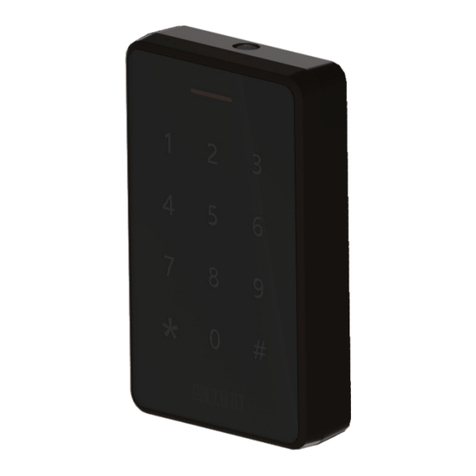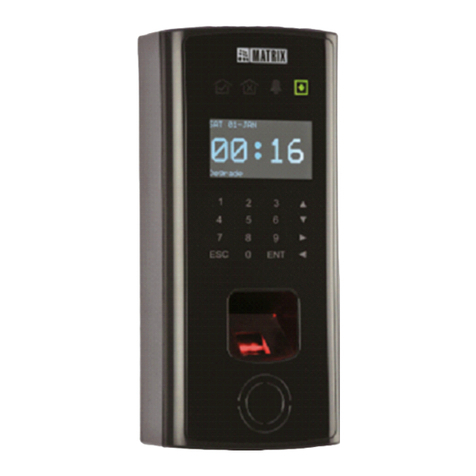
• 1 Ethernet communication port
• LCD display
• 4 LEDs. (Status, Alarm, Allow, Deny)
• 2 Internal Readers
• 1 External Reader port
• 1 Door Relay
• Touch sense Keypad
• Door Sense and Exit Switch inputs.
The COSEC DOOR is equipped with multiple reader interfaces
to read various credential inputs as provided by the user.
A Door relay port is available to control an access point as also
a door sense input to monitor the access point status through a
door sense device. The COSEC DOOR Controller is supported
with multiple user interfaces like Keypad, multi-color LED,
Buzzer and LCD display in addition to the Readers to
communicate with user. With input device support this controller
can read user credentials from card readers, FP ID from finger
print identification modules and PIN code input through the
touch sense keypad.
In addition to the above, the COSEC DOOR is designed to
support Request for Exit through EXIT switch or through an Exit
reader (interfaced through RS232/Wiegand port).
The COSEC PANEL DOOR also provides an Aux input and
output port. The Aux input port can be used to interface with
suitable sensors to detect an alarm condition. The Aux output
can be used for activating some alarm devices like hooter,
energize some devices or to control some annunciation
devices. Both the Aux input and Aux output ports are user
configurable and can be grouped & linked with other COSEC
PANEL DOOR Controller ports as per the required action.





























